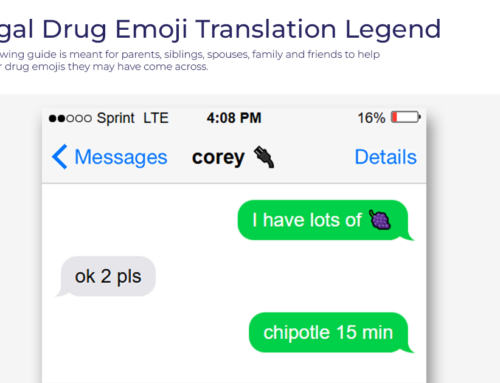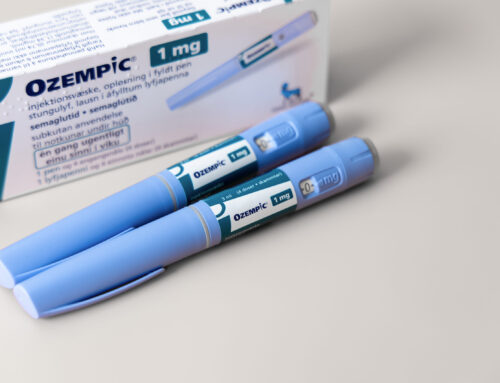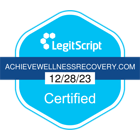Keeping tabs on substance abuse trends, like new emerging drugs, is an important responsibility for providers of addiction treatment in New Jersey. While a drug and alcohol rehab like Achieve Wellness and Recovery is primarily focused on treating our patients—-we also have a duty to inform and raise awareness.
Frightening new emerging drugs like nitazenes, pink cocaine, and tranq, just to name a few, are a serious threat. There is plenty of concern from NJ addiction treatment centers to public health departments and worried parents.
This Achieve Wellness and Recovery article sheds light on the rising threat of emerging drugs and what the best drug and alcohol rehabs in NJ are doing about them.
What are Emerging Drugs?
Emerging drugs are a category of substances of abuse that are being increasingly encountered in emergency rooms, drug seizures, and drug and alcohol rehabs in NJ. Some of these addictive drugs are newly formulated ‘designed drugs’ created in a laboratory, like 2C-b. Others may have been around for years but have only just begun to enter drug culture and the organized criminal networks that supply street drugs.
Which Emerging Drugs Are Alcohol and Drug Rehabs in NJ Most Concerned About?
Some emerging drugs have become mainstream enough that many, if not most, people have heard of them by now. Tranq, AKA xylazine, is a good example. So is cathinone, which most people know as “Bath Salts.” For this article, we are focusing more on the newest emerging drugs that have the potential to impact addiction treatment in New Jersey (or already are).
Pink Cocaine:
Originally, pink cocaine was primarily made of a designer drug called 2C-b, which is where it gets its other name, Tusi or Tuci. Now, though, most pink cocaine found is a mixture of ketamine, crystal meth, Molly (MDMA), benzodiazepines, xylazine and even fentanyl. The fact that each blend is different makes pink cocaine an even greater threat than it might have been otherwise. Facilities offering addiction treatment in New Jersey are increasingly seeing patients who are using pink cocaine.
Pink Cocaine Appearance and Slang Terms:
A pinkish-white, crystalline powder similar in consistency to powder cocaine. Also called Tusi or Tuci
Nitazenes:
Nitazenes are an emerging class of synthetic opioids that are up to 40 times more potent than fentanyl. Nitazenes have already been linked to an increase in overdose deaths and are often found in combination with other drugs like xylazine. Part of why fentanyl is so dangerous is that its potency makes it very easy to mix too much into another drug. Now, with nitazenes being as much as 40 times as strong, imagine how easy it is for nitazene users to fatally overdose.
Nitazenes Appearance and Slang Terms:
Nitazenes are found in a wide range of forms, from powders to tablets or capsules, and are often mixed with other drugs. Different Nitazines go by names like: Iso, Iso Brown, Toni, Nitro, Frankie or Pyro.
Fentanyl Analogs:
Fentanyl analogs are one of the emerging drug categories on this list most likely to impact addiction treatment in New Jersey. These synthetic opioids are chemically similar to fentanyl but even more potent. They are often mixed with other drugs, leading to an increased risk of overdose and death.
Fentanyl Analogs Appearance and Slang Terms:
Fentanyl analogs can come in a wide range of forms, from powders to tablets or capsules, and are often mixed with other drugs. Slang terms include Apache, China girl, Dance Fever, Good Fella, He-Man, and Great Bear.
Captagon:
Captagon is a synthetic stimulant containing amphetamine and theophylline. It is often used in the Middle East and has been linked to terrorist organizations. Its misuse can lead to severe cardiovascular and neurological effects. While Captagon is widespread throughout the Middle East and used by groups like ISIS-K and the Taliban, it has only been seen in the U.S. in limited amounts so far. But addiction treatment centers in NJ like ours are keeping a close eye on it just the same.
Captagon Appearance and Slang Terms:
Captagon is most often found in tablet form. The tablets are usually white or off-white and have a logo or symbol pressed on them. Captagon slang names include Cappy, Cappies, and Poor Man’s Cocaine.
Medetomidine:
A veterinary sedative and analgesic that has been misused for its calming and sedative effects. It is not intended for human use and can cause severe side effects, including respiratory depression and cardiovascular issues.
Medetomidine Appearance and Slang Terms:
Medetomidine is usually found as a crystalline white solid. People may grind it up to snort it or dissolve it in a solution to inject it. Nicknames for Medetomidine include Rhino Tranq.
N-Bombs (25I-NBOMe, 25C-NBOMe, 25B-NBOMe):
N-Bombs are synthetic hallucinogens that are similar to LSD but can be much more potent. They can cause severe agitation, hallucinations, and even death. These substances are known for their powerful hallucinogenic effects, which can last up to 12 hours or longer.
N-Bombs Appearance and Slang Terms:
N-bomb hallucinogens like 25I-NBOMe, 25C-NBOMe, and 25B-NBOMe are typically found in liquid, powdered form, or on blotter paper (like LSD). They often have a strong bitter metallic taste. Some dealers add mint or fruit flavoring to the liquid to mask the taste. Some N-bomb nicknames include 25l, Smiles, and Wizard.
Achieve Wellness & Recovery from Emerging Drugs
If you or someone you love is experimenting with one of these emerging drugs or has become addicted to drugs or alcohol in any form—we can help.
Emerging drugs are a real and present danger we cannot afford to ignore. Even if you aren’t certain you or the person you love is ready to enter drug and alcohol rehab yet—-it is never too soon to call. We’re here to answer your questions about emerging drugs, like pink cocaine, and give you a path to recovery—-but only you can make the first call.
Reach Achieve Wellness & Recovery at: (833) 680-0142
You can also click here to learn how our New Jersey drug rehab can work with your insurance.








